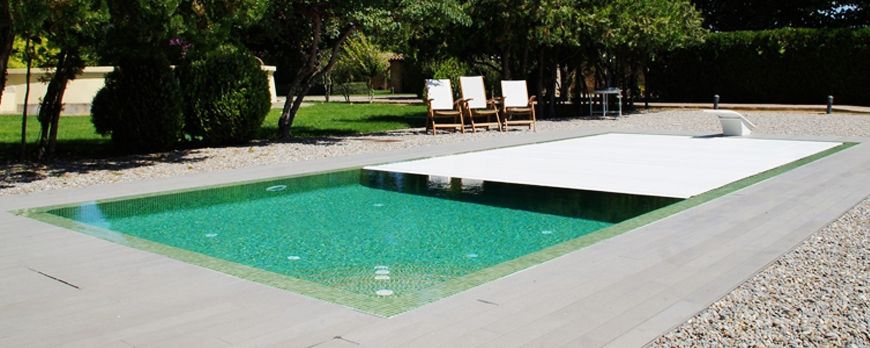

We tend to think of the possibility of installing a cover in the pool as a way of keeping water at a higher temperature. But this isn’t the only advantage a cover brings. It also prevents much of the evaporation and the entry of dirt into the pool, which also saves water and maintenance. On the other hand, it serves as a safety barrier, preventing accidental falls into the water.
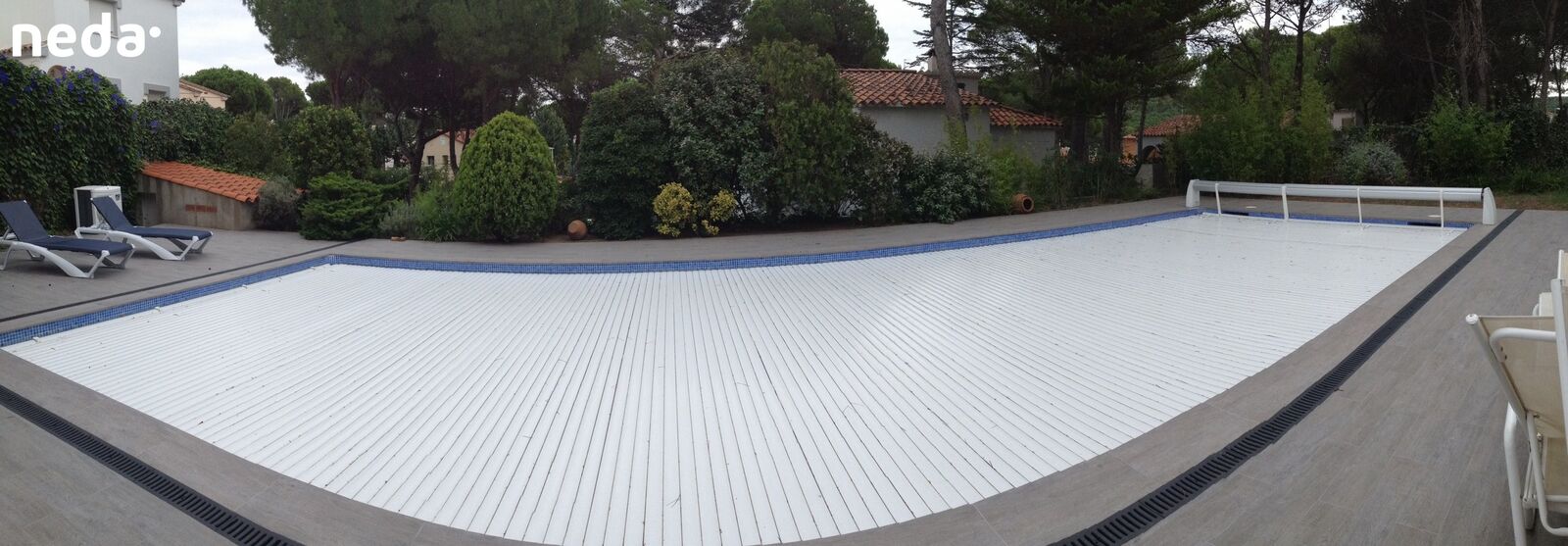
In this article we’ll talk about the characteristics of each type of cover so you can choose the one that best suits your needs.
- High covers These are transparent polycarbonate covers, with a metallic structure and high enough for bathers to walk around the pool underneath hem. They include a variety of types:
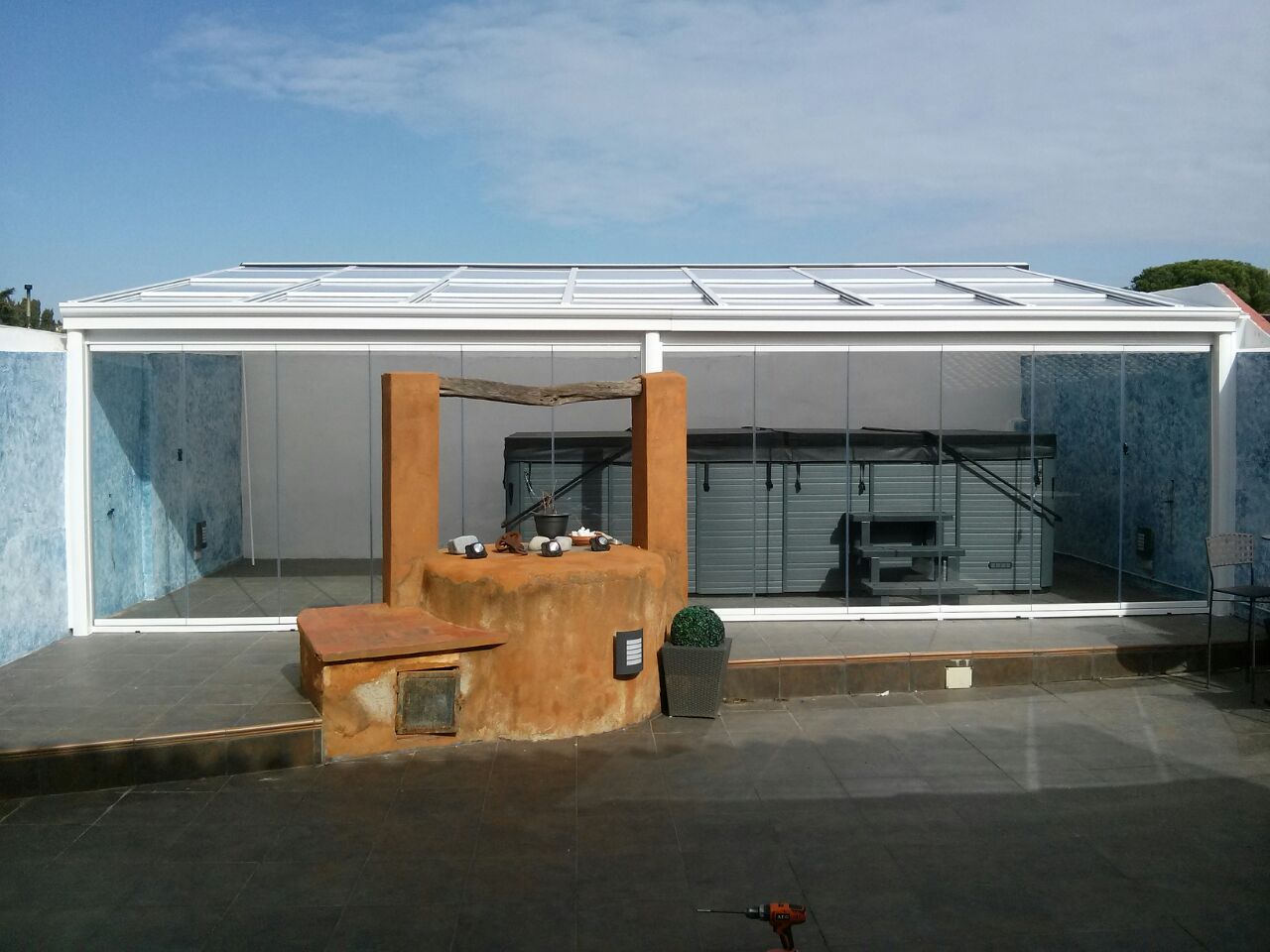
- Low covers Usually, depending on their height, you can’t bathe if they’re closed, since you can’t move underneath them. They may have telescopic or elevating panels.
- Rolled sheet covers. These covers are on the surface of the water. They can be manual, rolled using a crank, or automatic with rails. The most sophisticated ones aesthetically are those that are completely concealed when rolled up. Like the one in this Neda pool, with a built-in drawer.
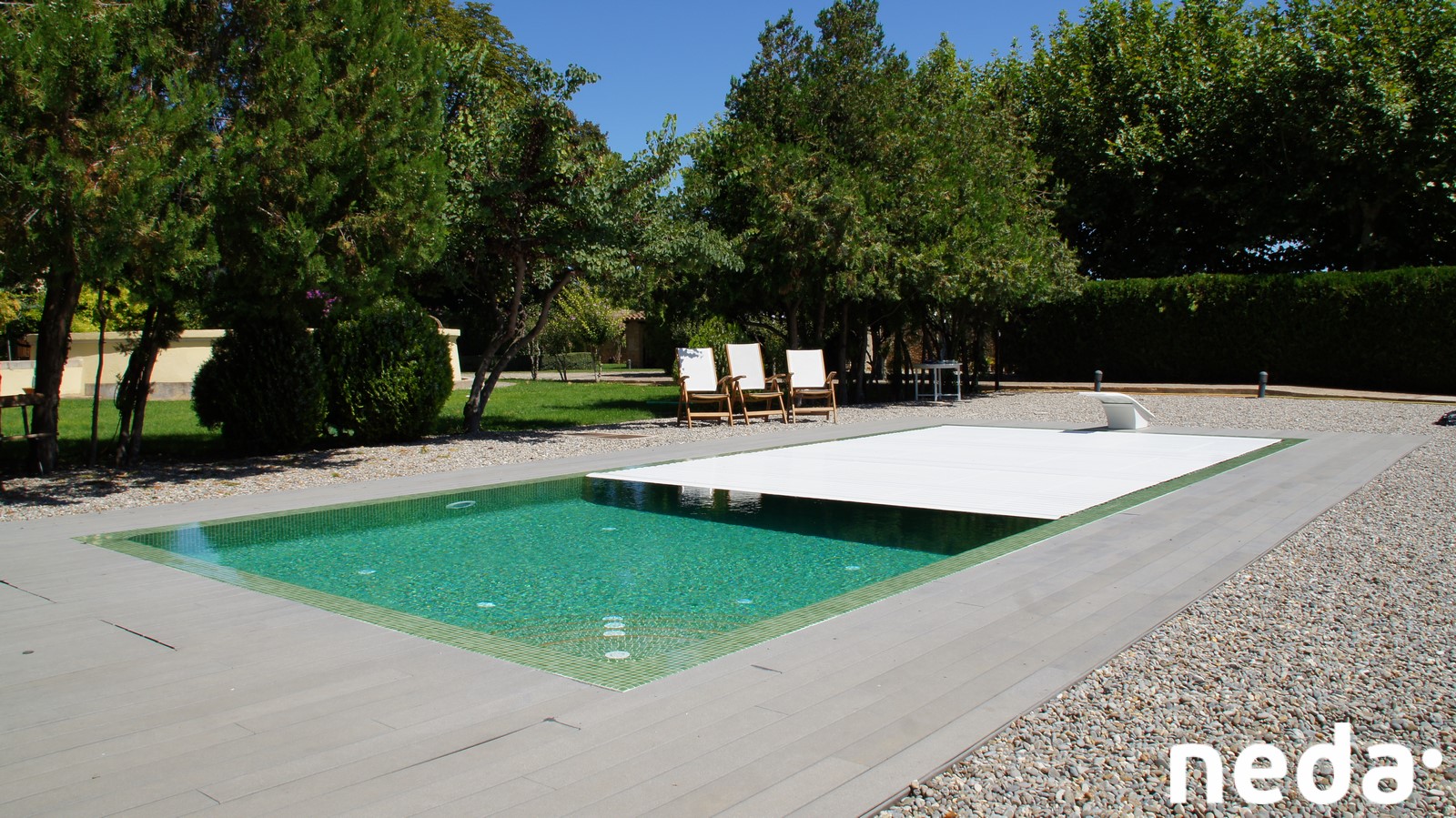
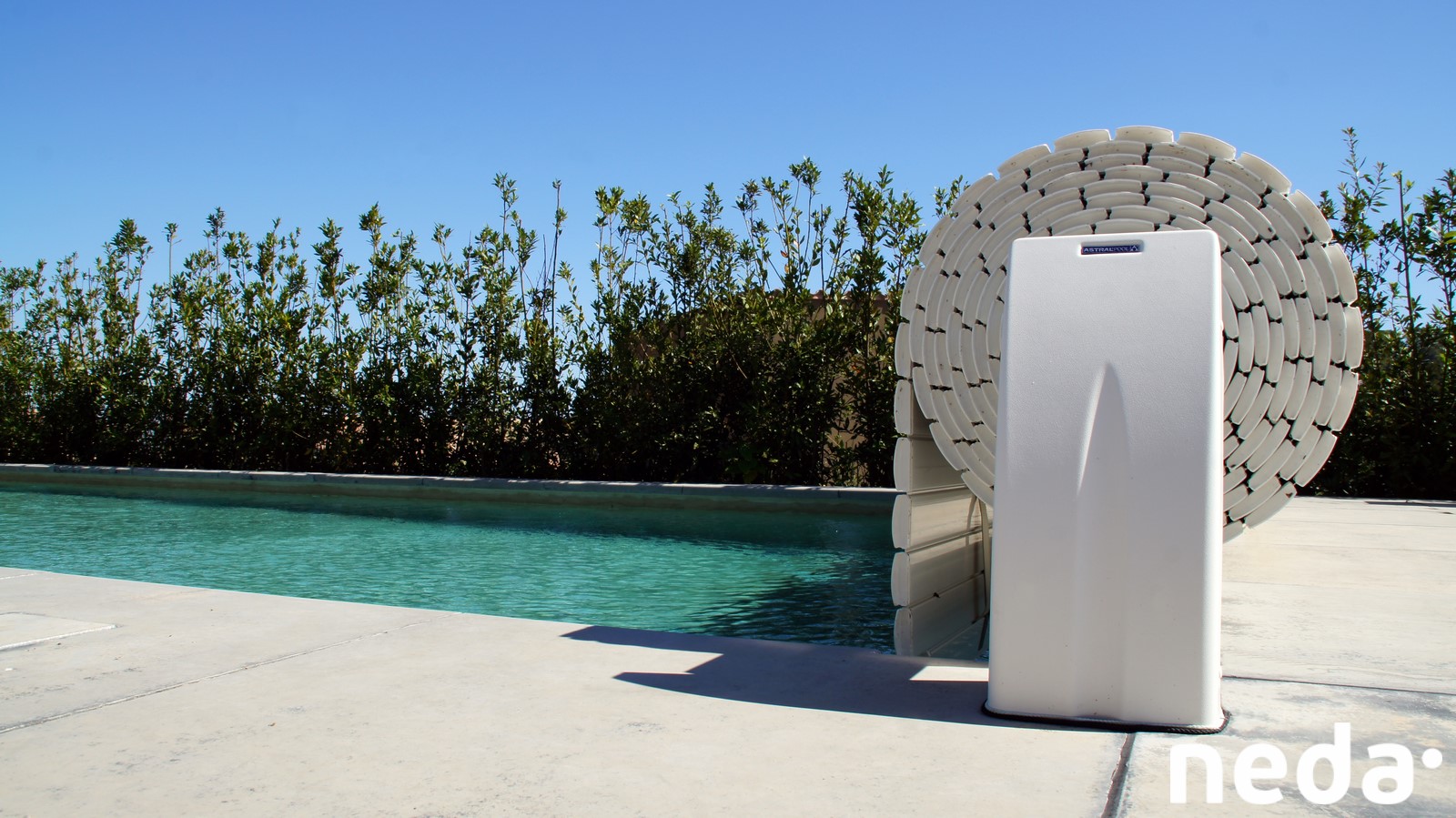
- Thermal covers They’re covered with flexible materials, usually polyethylene with bubbles, which must be fixed to the pool edges with tensors. You can also include a manual reel to facilitate installing and taking up the cover.
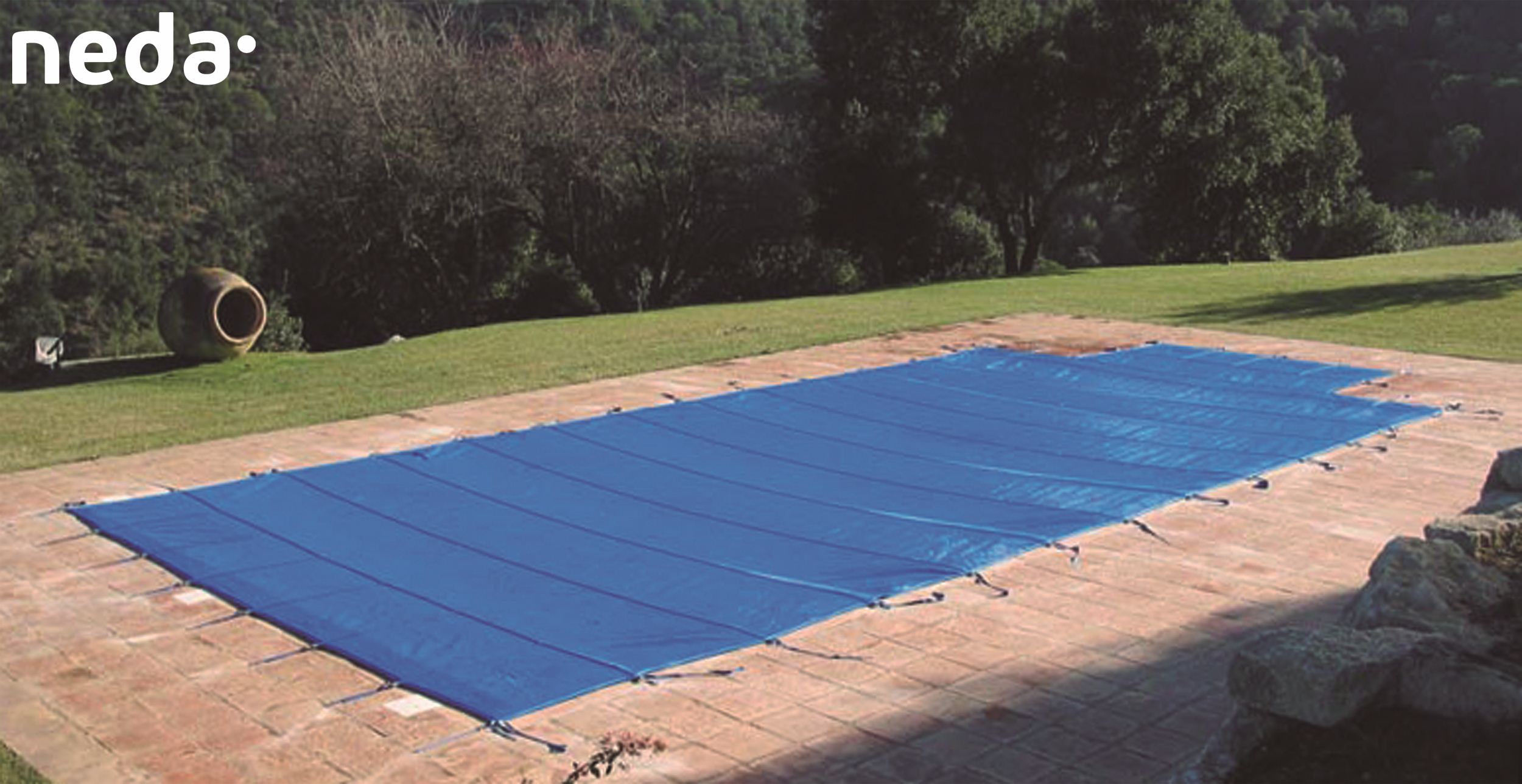
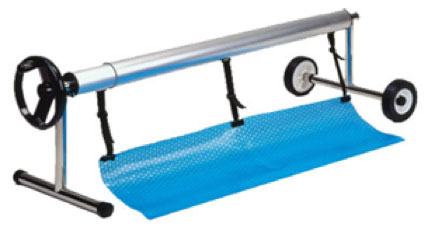
It’s often possible to install a semi-cover, taking advantage of the structure of the house to enclose the pool area
If you install a surface cover, especially in the case of high structures, you should also bear in mind that you need to control the humidity of the environment and you should probably implement a dehumidification system (some covers already have these as standard). Always employ a professional installer to guarantee an airtight seal and quality materials.
Analysis cookies are used to carry out anonymous analysis of user behavior on the website and allow measuring user activity and creating Browse profiles to improve websites.
|
Name |
Owner |
Data collected |
Purpose |
Duration |
|
_ga |
First-party cookie |
Visitor sessions. |
Analytics. |
2 years. |
|
_gid |
First-party cookie |
Visitor sessions. |
Analytics. |
1 day. |
|
_ga_ML8VHE2LCY |
First-party cookie |
Visitor sessions. |
Analytics. |
1 day. |
|
_gat_gtag_UA_[ID] |
First-party cookie |
Visitor sessions. |
Analytics. |
1 minute. |
Advertising cookies allow for the management of the website's advertising spaces. Furthermore, these cookies can be for personalized advertising, thus enabling the management of the website's advertising spaces based on the user's behavior and Browse habits. This is how their profile is obtained, allowing for the personalization of the advertising shown in the user's browser or on the user's other profiles and social networks.
|
Name |
Holder |
Data Collected |
Purpose |
Duration |
|
IDE |
Third-party cookie (doubleclick.net) |
Preferences, links, conversions, and interactions with advertisements. |
Advertising |
1 year. |
|
_fbp |
|
It is used to store and track website visits. | Advertising |
3 months |
Technical cookies are those that facilitate the user's navigation and the use of the different options or services offered by the web, such as identifying the session, allowing access to certain areas, facilitating orders, purchases, filling in forms, registrations, security, facilitating functionalities. (videos, social networks ...).
Personalized cookies allow the user to access the services according to their preferences (language, browser, configuration…).
|
Name |
Owner |
Collected Data |
Purpose |
Duration |
|
validacio_cookies |
Own cookie |
Management of cookies acceptance. |
Technique. |
1 year. |
|
(Aleatorio) |
Own cookie |
Visitor session management.. |
Technique. |
At the end of the session in the browser. |